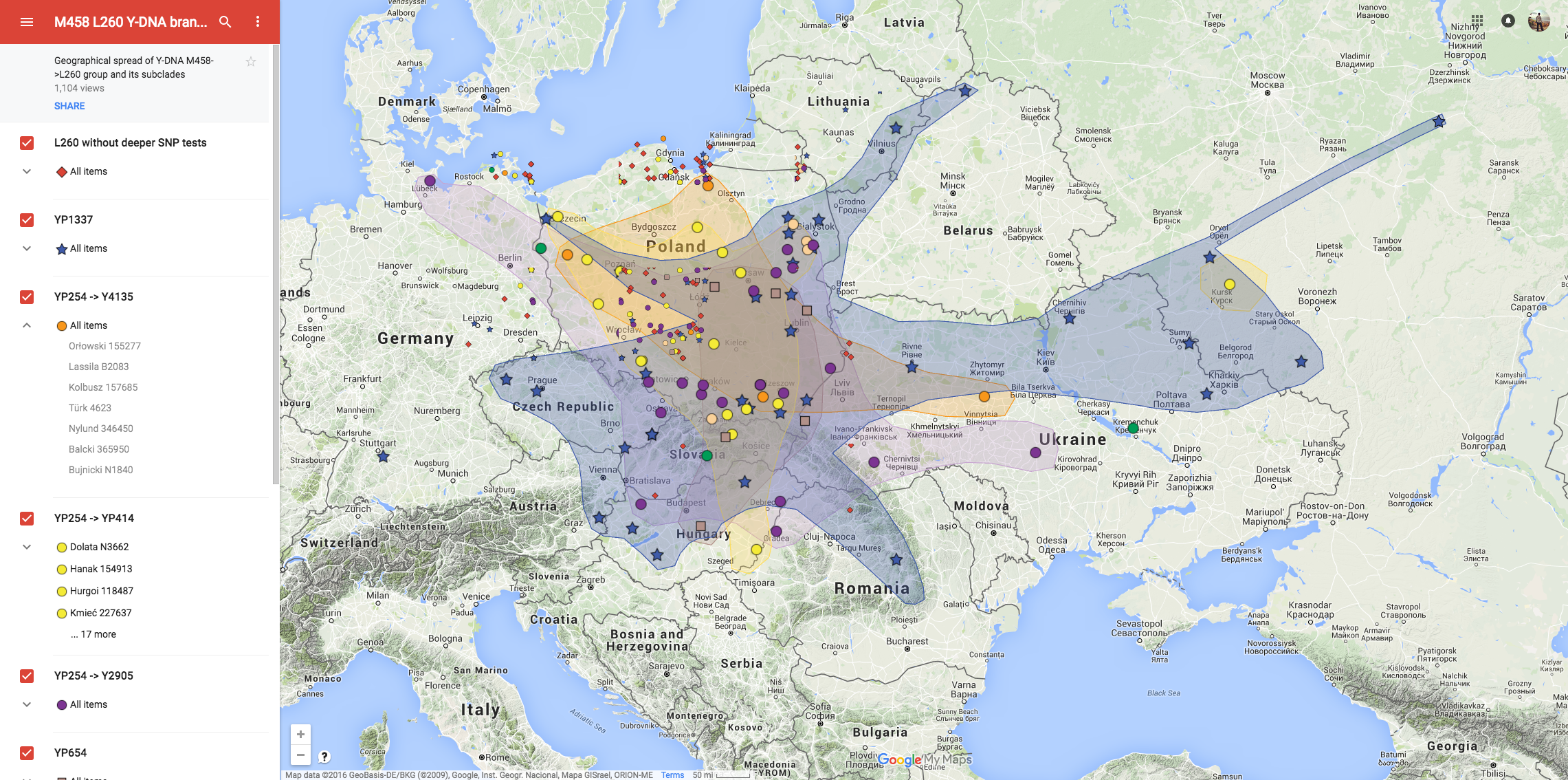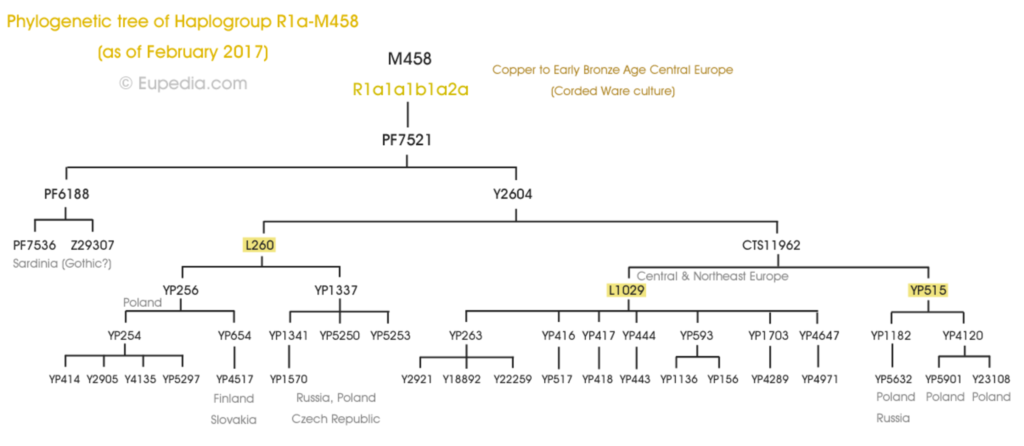R1a Potts (R-L260)
R1a – Western Slavic Potts Family Line
Haplogroup R-L260 (R1a1a1b1a1a) —> R-YP415
FOUR confirmed members of POTTS Ancestry have provided samples and had yDNA testing and have been confirmed as subclade is R1a1a1b1a1a – this is R-YP415 which is downstream from R-L260 (Western Slavic). References to this family in Early America ancestral research usually refer to this line as the Prussian Potts line or the Potts “Dutch Brothers”.
This Potts line is Western Slavic, more specifically Polish, and its haplotree branch shorthand is as follows:
M458 -> PF7521 -> L260 (Western Slavic) -> YP256 -> YP254 (Polish) – > Y2905 -> YP415 (Frederick Potts and Samuel Potts samples – see below).
Three of the Potts “Prussian or Dutch Brothers” DNA samples come from descendants of Frederick Potts (ca. 1750 -). Both samples are from descendants of Frederick Potts son Thomas Jefferson Potts – one via son Milton Vivion Potts and two from son David Dillard Potts. The samples are one mutation off from each other at marker XXXX in a 37 marker result.
The Fourth sample belongs to a descendant of Samuel Potts (1791-1856). This sample is 2 steps removed from the first two samples in a 37 marker yDNA – 1 step at marker DSY385b and 1 step at GATA G4. Both of these markers mutate frequently. This means the connection is within documentable history.
- Frederick Potts (B. ca 1750 in Colebrooksdale, Berks County, Pennsylvania). His descendants lived and died in Clark and Nicholas Counties in Kentucky and Boone, Missouri. He is likely to have died and be buried in one of these three locations. He may have been born in Oley Pennsylvania, Holland or Prussia (Poland). The author of this website is his descendant.
- Samuel Potts (b. 14 Apr 1791 – d. 3 Aug 1856) – Born in either Kentucky or Virginia and died in Daviess County, Indiana in 1856. Lived in Nicholas, Kentucky in 1810. It is very likely his line descends from Frederick Potts above (or his father).
In order to understand how the Potts Western Slavic line fits into a broader ancestry we must work our way backwards back up the SNP map. The descriptions below will move in reverse chronological order from the most recent times to most ancient.
Below is a physical location Google map of last know ancestors of yDNA matches for the Frederick Potts (ca. 1750) and Samuel Potts (1791-1856) yDNA.
Click the map to open the interactive version on Google Maps specific to R-L260. You can drill down to only show YP2905 and YP415 (see second image below). This gives some directional data about where other people with almost the exact same yDNA originated.
Most of samples in the L260 map above originated from : Poland, Czech, Slovakia, Hungary and Eastern Germany. The common ancestor of R-L260 lived abt. 2300-2700 years ago, and line splits into many smaller sub-clades.
The Potts Western Slavic line is subclade YP415 and is believed to have branched off from YP2905 around 500 AD. Below is a map showing only YP254 -> YP2905 -> Y415 oldest know ancestors physical locations. One can conclude that it is likely the Western Slavic Potts Line came from where other YP2905 and YP415’s originated.
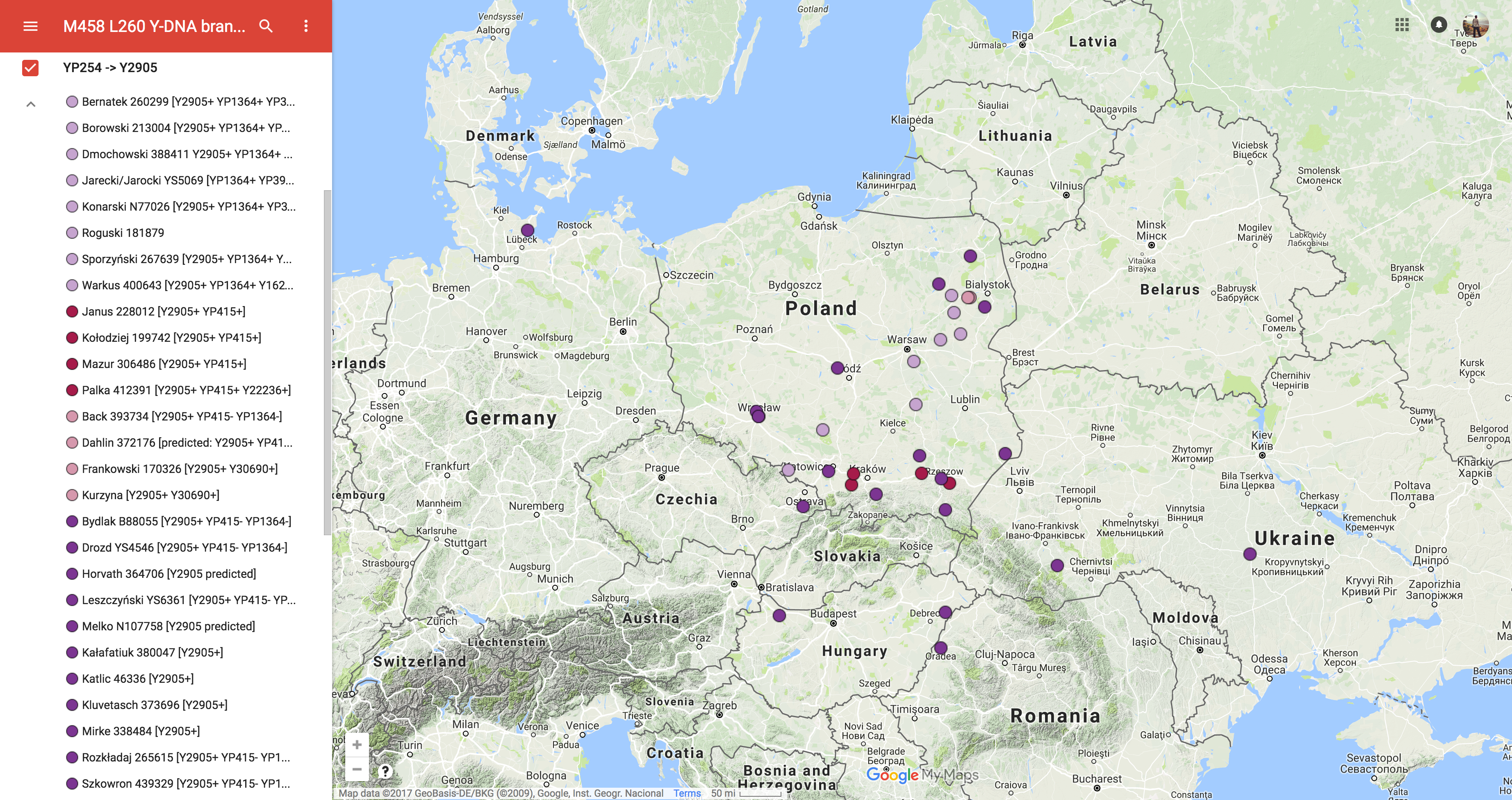
Of course, there is obviously ebbing and flowing of societies driven by events that cause great migrations and people don’t stay in the same place forever. But, none-the-less it is good directional information. And chances are good that the Wester Slavic Potts originated within what is now the borders of Poland sometime between 1,400 and 1,740 AD. Though, for instance, it is possible these Potts may have migrated to someplace like Potsdam, Germany or Holland or maybe Brandenburg during the 1600’s to 1740 or perhaps prior. We may never know unless we can find records prior to 1740 showing where Frederick Potts originated.
Now, as we move further up the SNP tree we can see how this group fits into the overall SNP history. You can review the full M458 Branch and its subclades below and see on the bottom far left where YP415 resides. The Western Slavic L260 branch split about 1000-500 BC. and the Polish mutation around 1 A.D. and of course the YP415 branch around 500 AD.
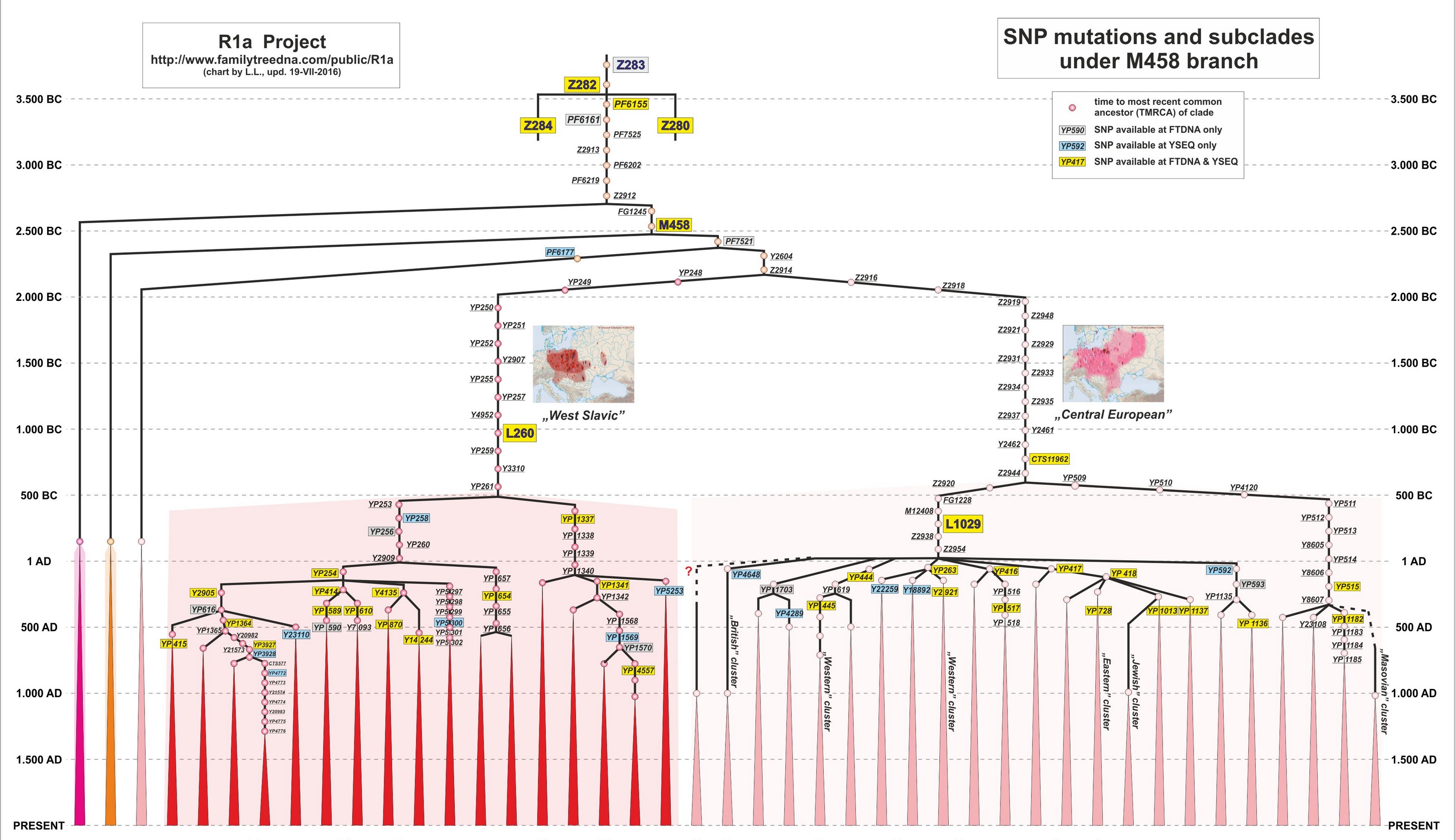
And to understand how M458 and L260 fit into the larger overall R1a group going back to 16,000 BC, you can reference the R1a Clade Map below. You’ll find L260 in pink near the right middle on the bottom of the Haplotree.
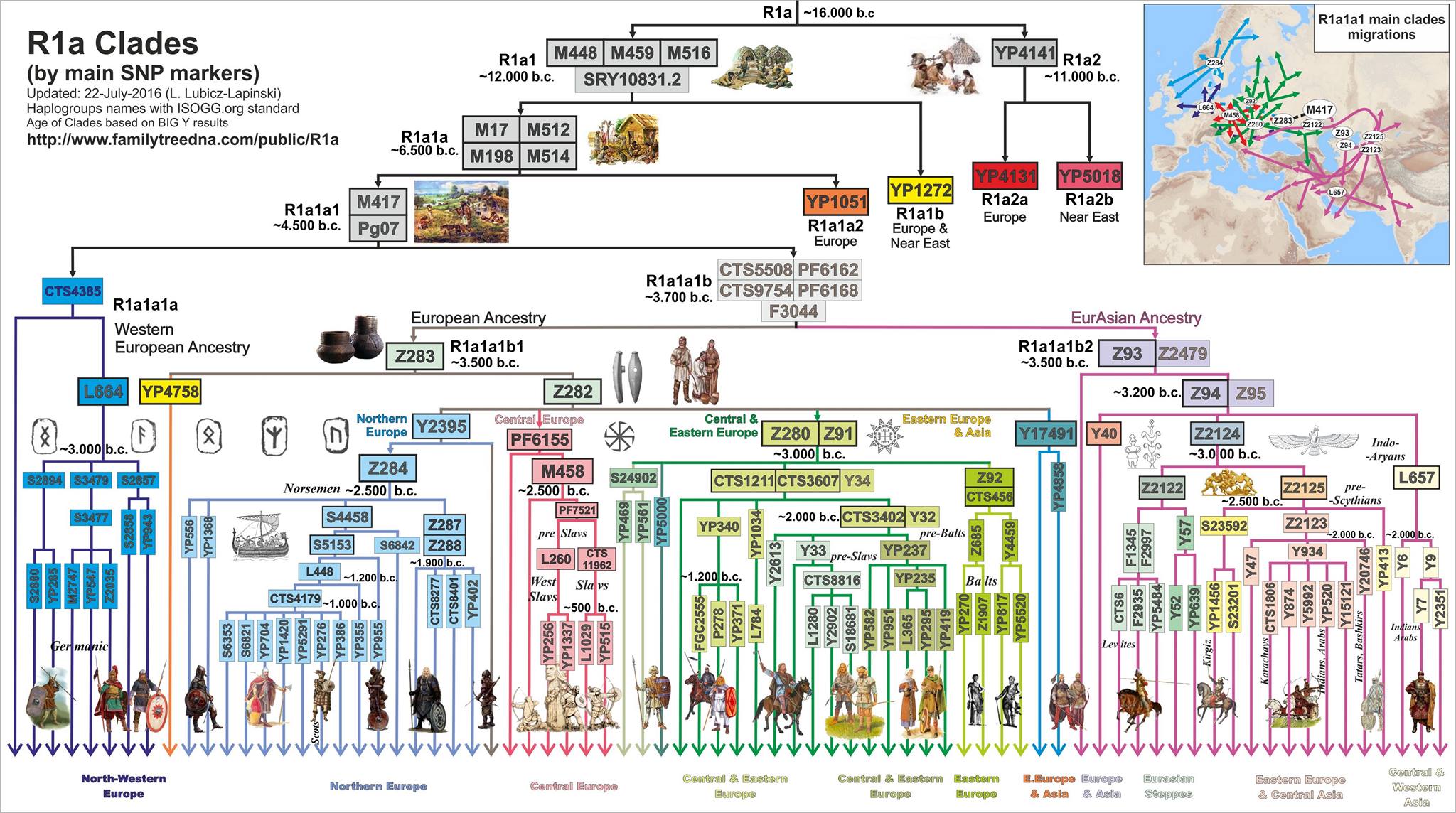
Having said all that, below is general information on the R1a Haplogroup and some if its majors subclades. As you can see the density of R1A DNA proliferation mirrors the locatinos above that we have been discussing. And obviously we can rule out the eastern areas of the map and focus on Poland, Germany and Holland as sources of this Potts Line.
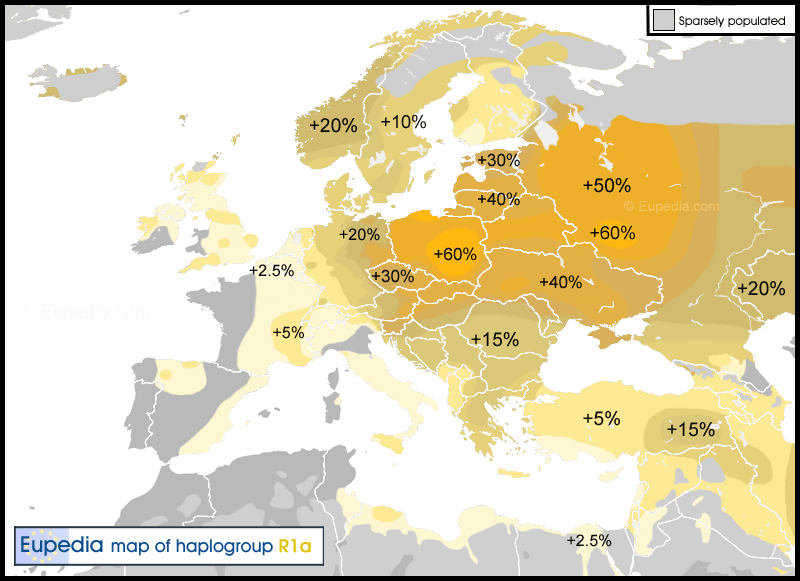
History on R1a Branch (from Eupedia)
R1a is thought to have been the dominant haplogroup among the northern and eastern Proto-Indo-European language speakers, that evolved into the Indo-Iranian, Thracian, Baltic and Slavic branches. The Proto-Indo-Europeans originated in the Yamna culture (3300-2500 BCE). Their dramatic expansion was possible thanks to an early adoption of bronze weapons and the domestication of the horse in the Eurasian steppes (circa 4000-3500 BCE). The southern Steppe culture is believed to have carried predominantly R1b (M269 and M73) lineages, while the northern forest-steppe culture would have been essentially R1a-dominant. The first expansion of the forest-steppe people occured with the Corded Ware Culture (see Germanic branch below). The migration of the R1b people to central and Western Europe left a vacuum for R1a people in the southern steppe around the time of the Catacomb culture (2800-2200 BCE). The forest-steppe origin of this culture is obvious from the introduction of corded pottery and the abundant use of polished battle axes, the two most prominent features of the Corded Ware culture. This is also probably when the satemisation process of the Indo-European languages began since the Balto-Slavic and Indo-Iranian language groups belong to the same Satem isogloss and both appear to have evolved from the the Catacomb culture.
Ancient DNA testing has confirmed the presence of haplogroup R1a1a in samples from the Corded Ware culture in Germany (2600 BCE), from Tocharian mummies (2000 BCE) in Northwest China, from Kurgan burials (circa 1600 BCE) from the Andronovo culture in southern Russia and southern Siberia, as well as from a variety of Iron-age sites from Russia, Siberia, Mongolia and Central Asia.
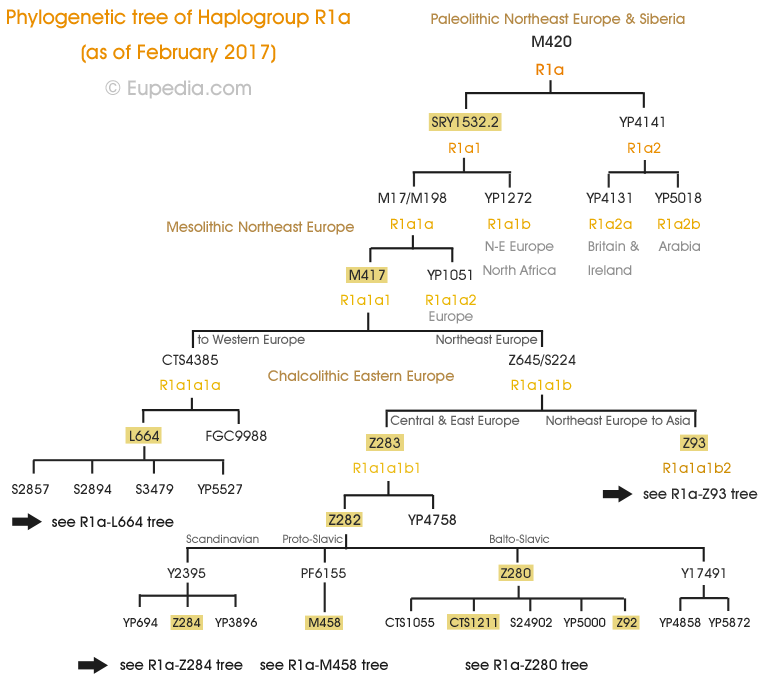
And Next following the R1a-M458 (Proto-Slavic) Tree eventually down to R-YP415.
History of the R1a-M458 (Proto-Slavic) and its Subclade R-L260
R1a-M458, primarily a Slavic subclade, with maximum frequencies in Poland, the Czech Republic, Slovakia, but is also fairly common in southeast Ukraine and northwest Russia. its subclade R1a-L260 is clearly West Slavic, with a peak of frequency in Poland, the Czech Republic and Slovakia, and radiating at lower frequencies into East Germany, East Austria, Slovenia and Hungary.
R1a1a1b1a1a (R-L260), commonly referred to as West Slavic or Polish, is a subclade of the larger parent group R-M458, and was first identified as an STR cluster by Pawlowski 2002 and then by Gwozdz 2009. Thus, R-L260 was what Gwozdz 2009 called cluster “P.” In 2010 it was verified to be a haplogroup identified by its own mutation (SNP).[51] It apparently accounts for about 8% of Polish men, making it the most common subclade in Poland. Outside of Poland it is less common (Pawlowski 2002). In addition to Poland, it is mainly found in the Czech Republic and Slovakia, and is considered “clearly West Slavic.”[52] The founding ancestor of R-L260 is estimated to have lived between 2000 and 3000 years ago, i.e. during the Iron Age, with significant population expansion less than 1,500 years ago.[53]
POTTS Line Descends from R-L260
Two confirmed members of POTTS Ancestry have had yDNA testing and have been confirmed as subclade is R1a1a1b1a1a – which is R-YP415 which is downstream from R-L260. References to this family in Early America usually call them the Prussian Potts line.
It goes M458 -> PF7521 -> L260 -> YP256 -> YP254 (Polish) – > Y2905 -> YP415 (Potts “Prussian” DNA samples of Frederick Potts and Samuel Potts).
Resources
- Eupedia – Haplogroup R1a
- Wikipedia – Haplogroup R1a
- Family Tree DNA – R1a Research Group
- Facebook Project page for R1a1a
- Facebook Haplogroup for R1a1a:
Map of Western Slavic Expansion in the 9th adn 10th Century
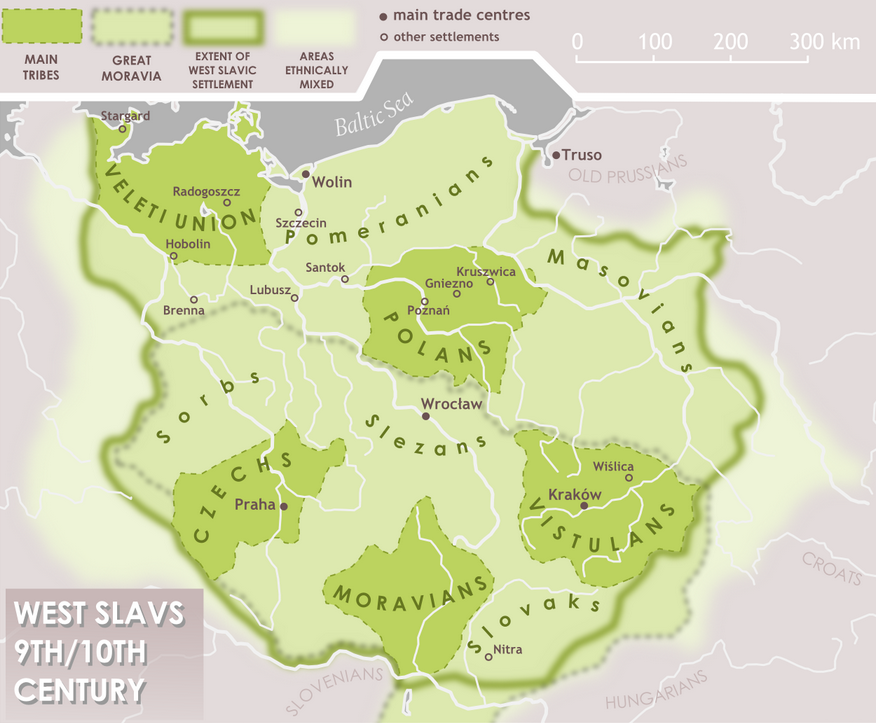
Map of Prussian Empire in the 18th Century
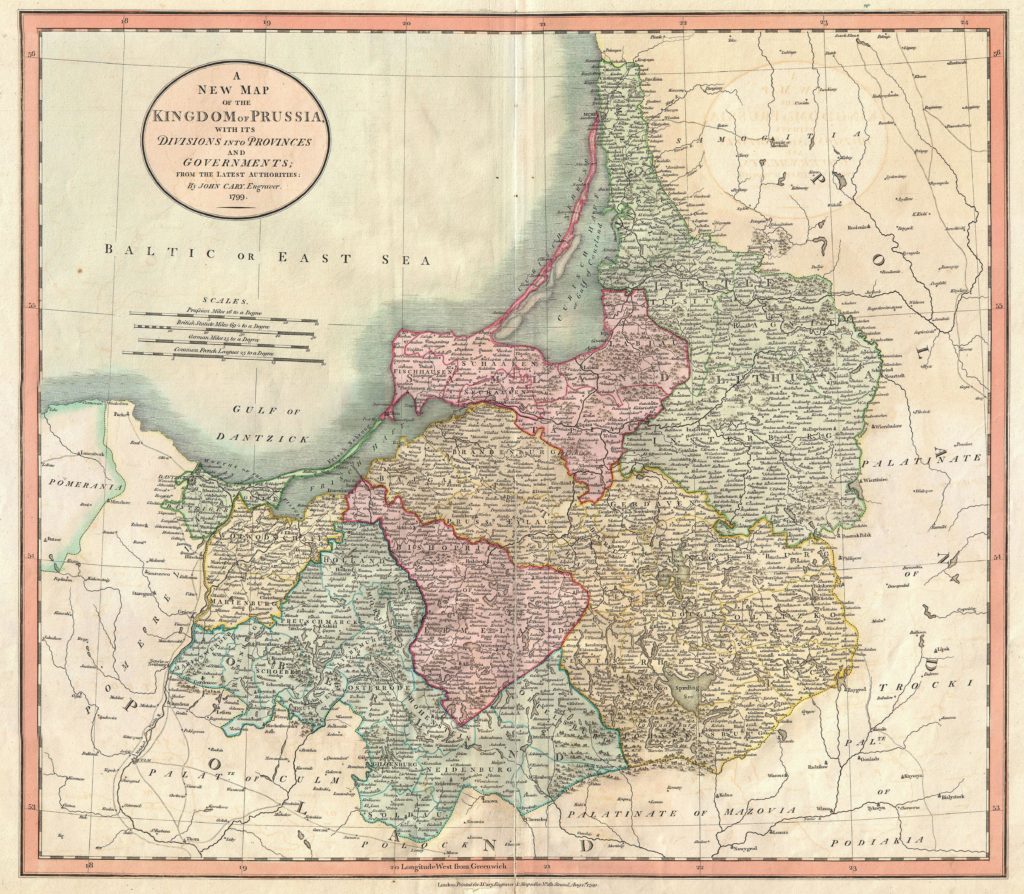
Map of Current Day Matches to Potts Western Slovic Line
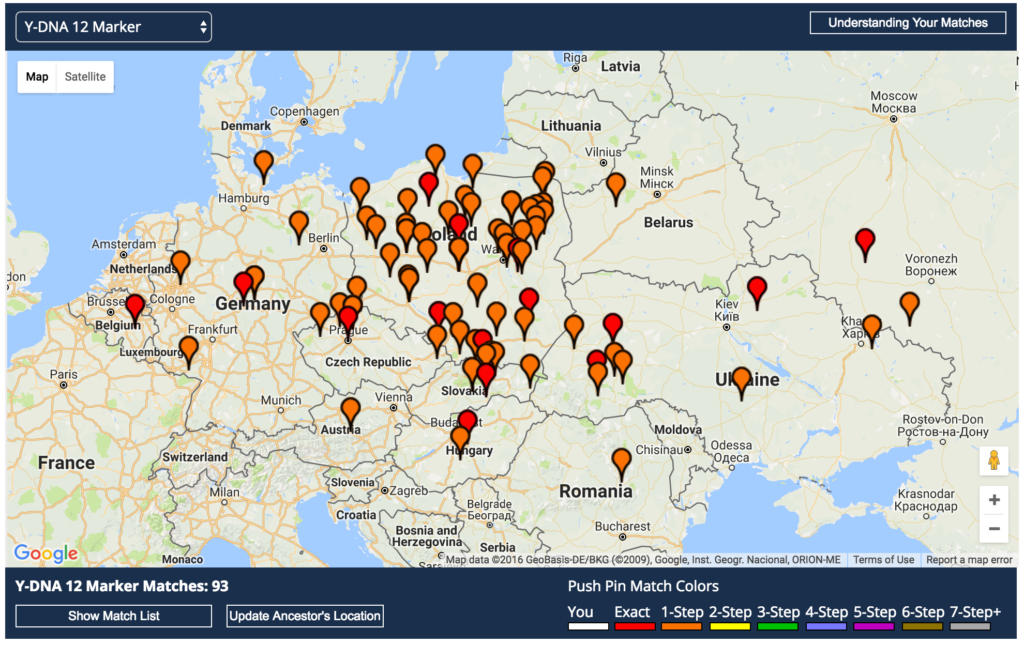
Glossary
- Clade comes from the Greek word Klados = branch. A Clade on the Y Chromosome tree is also called a Haplogroup. Subclade is a term to describe the relationship between two clades with the sub-clade being downstream (occurring later in time). A Clade includes all the descendants of a single founder (common ancestor).
- Haplogroup is defined as a group of similar Haplotypes that share a common ancestor with a Single Nucleotide Polymorphism (SNP) mutation. Your Haplogroup tells much about your ancient ethnic origins. Meaning thousands of years ago. In the case of our I2a Haplogroup, we all share the SNP (called Snip) I-P37.2+. The I2a Haplogroup has numerous subgroups or subclades, all determined by various other SNPs which we will discuss later.
- SNP is defined as a change in the DNA which happens when a single nucleotide (A, T, G or C) in the genome sequence is altered. A person has many SNPs that together create a unique DNA pattern for that individual. Snips clarify the branching of a tree–separation of different subhaplogroups.
- Haplotype is defined as one person’s set of values for the DYS markers that have been tested. In other words, your yDNA test results. Think of Haplotypes as leaves on a tree, and a Haplogroup as a limb of that tree. Haplotype is a contaction of the phrase “haploid genotype”.
- Allele is defined as a DNA sequence that repeats at a certain location (DYS marker) on the Y Chromosome. The Allele value is the number of times the sequence repeats. Pronounced uh-LEEL.
- STR is a short DNA motif (pattern) repeated in tandem. A, T, G or C repeated eleven times would give the DYS marker a value or allele of eleven. DYS is short for DNA/ Y-Chromosome/ Segment. The name of a marker on the Y-Chromosome.
